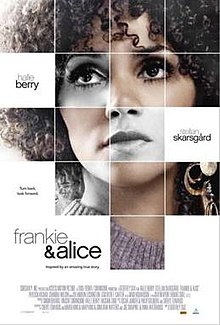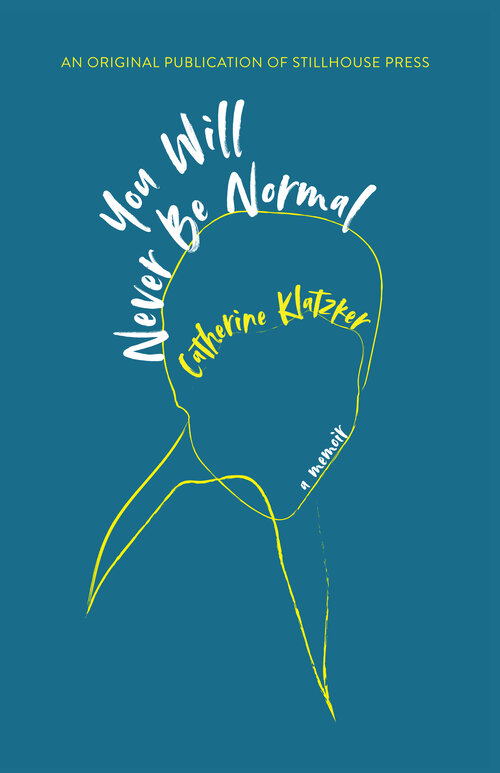Book List: DID Memoirs ~ Immerse Yourself in Memoirs by People with Dissociative Identity Disorder
Updated: 3/7/22
It should come as no surprise that the movies Split and Glass by M. Night Shyamalan play upon sterotypical and damaging misconceptions of dissociative identity disorder (DID), formerly referred to as multiple personality disorder (MP).
Although it may be entertaining to watch James McAvoy struggle through 24 multiple personalities, many of which are distinguished by starkly different personas, fashion, and even physical appearances, the entertainment industry aims to do just that: entertain. As writers, we know what this means – you’ve got to have a protagonist, conflict, rising tension, a climax and a denouement/resolution. That basic story structure is expected by audiences – not only for movies and TV – but also for novels.
This means that James McAvoy’s 24 different personalities have to stand out to you. They have to have you on the edge of your seat. In a book, they have to reach out and make you want to turn the page until you reach the end. In that space, there isn’t enough breathing room for simply existing, struggling through simple daily tasks.
DID is the brain’s amazing way of coping with an extremely traumatic set of events or chronic and severe abuse. It enabled them to survive and to find resources in an environment where there was no nurturing, no safety, no protection, and no way out. Psychology Today does a better job of defining this mysterious condition than I ever can.

People with DID may have various “alters” that hold and deal with the complexities of their life experiences. Each of these alters may represent a different phase of their life or a different age or sometimes a different personality not tied to an age range in their life but rather the different roles they hold in their lives.
For my friends with DID, their alters have represented either distinct age ranges with particular personality attributes such as a young child who may be observant but shy or an adolescent who is rebellious and outspoken. The alters may or may not share information with each other and may or may not have awareness of each other.
Some people with DID want to integrate – that is to bring all of their alters together to become one cohesive identity. Others may reject integration (See When Rabbit Howls (1987) by The Troops for Truddi Chase). For those who wish to integrate, working towards bringing all the alters together is a complex journey of healing and self-evolution that is difficult, complex, and intricate requiring patience, dedication, and hard-work.
I have sat next to my friends and watch them switch between states before my very eyes. Far from the sensationalized transitions that John Malcovoy exhibits in either of M. Night Shyamalan’s movies, they are subtle, barely imperceptible and sometimes not even recognized by my friends who are switching.

The switches may be characterized by memory lapses when one alter – let’s say A – holds the memory of time spent with me while another alter – let’s say B – won’t remember what A said to me or did with me. Alter B has told me that it is very difficult, if not impossible, for them to remember – likening it to trying to remember a dream that keeps slipping away from them but that they know is there. It does not matter if alter A had the interaction with me moments before, alter B may only recall the fuzzy outlines of it – if at all.
Sometimes, there is no memory lapse and there is recognition but distant, as if the person who had the switch had been watching themselves from afar as if on television. Whatever the experience, as a close friend, it is both extraordinary and ordinary. It is the course of everyday life for my friends and it a lifelong endeavor.
Hollywood has sensationalized DID to the point of romanticizing or dramatizing the lives of people with DID. But from my experience, my friends with DID are not much different than my friends without DID. I take walks with them, have dinner with them, go dancing with them, raise children alongside them, celebrate their birthdays, get into disagreements, splurge on extra chocolate mocha fudge cakes, go camping, and sunbathe with them. We cry over drama in our lives together, we laugh and celebrate our victories together. Like many human beings, they are passionate, brave, complex, hopeful, and hardworking.

They teach, attend school, try cases before the Superior Court of California, drive buses, work in factories, waitress, design architectural wonders for the City of Oakland, serve on Boards of non-profits, volunteer at animal shelters, and feed the homeless at their church.
They are everyday folks trying to achieve everyday wonders and they deserve to be respected for their achievements, for their survival skills, and the hard work they do to shape and lead the lives they envision for themselves. The sensationalization of their experiences and even of the traumas that may have caused it (child abuse, etc.) fail to give them the respect they deserve.
In my opinion, movies like Split and Glass demonize and hurt people with DID – twisting and linking their condition with violent criminal behavior by using DID as plot devices and portraying them either as villains or victims. Poor or troubling portrayals include: Dr. Jekyll and Mr. Hyde (1931), Psycho (1960); Primal Fear (1993), Fight Club (1999), Identity (2003), Secret Window (2004), Raising Cain (1992), Mr. Brooks (2007), My Bloody Valentine (2009), Shutter Island (2012), The Mummy (2017), and Me, Myself & Irene (2000).
Not all movies and shows are terrible. There are more reality based representations that can be found in movies that reflect real-life experiences: Sybil (1976) (based on the life of Shirley Ardell Mason – although there has been controversy around falsification of this story – see Sybil Exposed), Voices Within: The Lives of Truddi Chase (1990), David and Lisa (1962), The Three Faces of Eve (1957) (based on the life of Chris Costner Sizemore but contains fabrications by Corbett Thigpen – the real story is in Sizemore’s books listed below). There were also sitcoms and movies based on fictional accounts that may do folks with DID more justice: Lizzie (based on a novel by Shirley Jackson), United States of Tara (2009-2011), Mr Robot (2015 to present), Waking Madison (2010), and A Tale of Two Sisters (2003).
I personally believe that memoir is the best avenue to truly understand the experiences of someone with DID. I have pulled together a list of books written by or about real people who identify as someone with DID. My intent is to create a list that may provide credible and authentic reading experiences. This list is not meant to be my recommendations or opinion as to the quality of the books. Rather, they provide you with tools so that you can do your own research and explore yourself, rather than let Hollywood lead you. Feel free to share your opinions and knowledge with me about the books on my list – or let me know if there are books I should add to this list or take off it.
The basic criteria for the books on my list are that they are:
(1) Authentically written,
(2) #OwnVoice, or
(3) Written by a diverse writer.
I have purposefully left out books that were either over-sensationalized – or where the authors took advantage of and even fabricated events in the lives of real people who identified as DID.
Books written by and movies involving people of color who identify as DID:
- Frankie & Alice (2010) – Lionsgate Movie (based on the life of Francine Murdoch)



- The Sum of My Parts: A Survivor’s Story of Dissociative Identity Disorder (2011) by Olga Trujillo JD



Memoirs by writers who do not identify as people of color (not that I know of) but who identify as people with DID:
There is a current trend in more authentic works coming from individuals who are diagnosed with DID which is refreshing. My review of works from past years indicates that earlier works may have had an assisting hand – but that is just speculation. When I’ve read “When Rabbit Howls,” “First Person Plural,” for example, or “The Flock,” there is a strong sense that an editor may have stepped in and said, “Hey, if you really want readers to understand this…you’re gonna have to do this.” I sincerely hope that’s not the case’ it’s hard to tell if there was editorial or ghost-writing assistance, but it sure feels like it.
With the advent of small and independent publishers and the rise in self-publishing, however, you get to hear straight from the heart the real life experience of people in their own – possibly only lightly edited or copy-written words. “You Will Never Be Normal,” for example, written by Catherine Klatzker offers a refreshing voice from her own experiences, chronicling her journey as she struggles pre-diagnosis with what is going on in her head. At times, mid-chapter in her introductory chapters, she turns back, commenting from a place of knowing, allowing us to see her growth. Standing from the place of knowing, she tells us “[I]n retrospect, I know he was watching me dissociate, watching my little girl Part take over. Perhaps I looked blank, staring at nothing. I’ve been told that when she protected me, my eyes typically deviated and my hands often gripped each other…” In the same instance, she allows us to join her as she slowly discovers her Parts. This close, intimate, and authentic voice is so precious in memoirs about mental health. I hope to see a continuing culture in literature and readership where the authentic voice is nurtured and celebrated.


- Shattered Diana: A Memoir Documenting How Trauma and Evangelical Fundamentalism Created PTSD, Bipolar, Dissociative Disorder (Multiple Personality Disorder) in Me (2017) by Diana Lee, Sally Kile (Foreword)







- The Magic Daughter (1996) by Jane Phillips ~ Jane’s book is unique because her story is about being a multiple before she experiences abuse.






Books that appear to be self-published. I put these books into their own category because it takes a special kind of bravery to put your experiences out there.








Written by close friends of their DID friends:

Biographies about real life people who identified as people with DID:

Books co-written with a therapist and client:

Edited or anthologized by others:
- Multiple Personality Disorder from the Inside Out (1991) Edited by Barry M. Cohen, with Esther Giller and Lynn Wasnak ~ contains essays and notes by abuse survivors and trauma-split multiples

Guides by people who identify as DID:



- Recovery is my best revenge: My experience of trauma, abuse and dissociative identity disorder (Collected Essays) (2016) by Carolyn Spring


Finally, as a special addendum, if you’re into fiction, there are a few novels out there that do a decent job of portraying characters with DID. A book without parallel is Matt Ruff’s “Set This House in Order: A Romance Of Souls.” Matt, who professes to not have DID, has done an amazing job of crafting a romance with unexpected twists and characters who are exploring their own healing as they build a relationship with one another. Of note is also self-published book by Vevina-Anne Swanson, “I am Malory,” who also does not have DID. Swanson does an admirable job of writing scenes of dissociation which, according to readers’ reviews, does a good job of describing what the experience feels like. Check them out for yourself…


If you have DID and would like to share your story on my blog, please write to me at: renbraueri@gmail.com. I’d love to hear from you.

